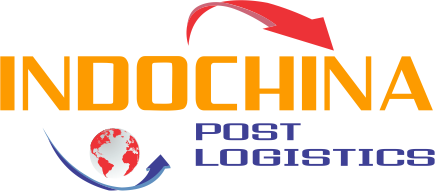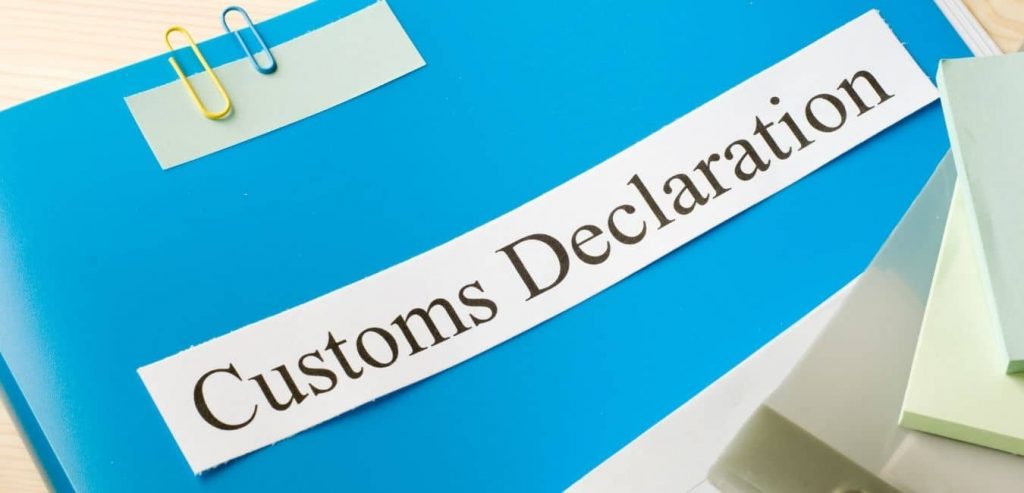You will very definitely be involved in exports while doing international trade, and you will be unable to isolate them from customs declaration. Many different sorts of documentation make the customs declaration process more difficult. Let’s take a look at Indochinapost‘s entire export customs declaration process for clients.
Contents
What are the steps in the customs declaration process?
Step 1: Evaluate, check what kind of goods it is?
If you wish to do business in the near future, you must be certain that your items are legal and not forbidden,… And the export of commodities is no exception, necessitating even more stringent oversight.
When planning to sell or export goods overseas, the first step is to determine whether your items are prohibited, encouraged, or limited in order to proceed with the necessary handling procedures. The following are some examples of scenarios:
- Ordinary commercial goods: Congratulations, this kind of merchandise is not prohibited or requires any complicated documents or procedures. Feel secure in the next steps of customs declaration for export.
- Prohibited goods: If the foreign market is very potential but in Vietnam is banned from export, you should immediately abandon this intention. You don’t want to get caught up in complicated legal matters, do you?
- Goods that require an export license: Some special items and products that require an export license you need to pay attention to such as herbal medicine, seeds, plants and animals, mineral samples, wood and wood products. , cosmetics, liquid, sand, powder, coal, books – hard drive. Therefore, you need to obtain a full license before you go through with the export customs declaration. Avoiding getting a permit will take a long time.
- Goods needing specialized inspection: Specialized inspection means that the competent agency takes samples of goods to evaluate whether the goods meet technical standards according to specialized regulations or not. Often there are more specialized inspections on imported goods than on exported goods. There is currently no specific list regulating items subject to specialized inspection. Therefore, depending on the type of good you intend to export, it is important to check the specifics of that industry.
- Goods subject to export tax: With our country’s open-door policy and export promotion, many items have been taxed at 0%. But besides that, there are still many kinds of goods subject to an export tax. Therefore, you need to ensure that your tax obligations are fully fulfilled in order to be able to ship goods on time. Refer to Decree 57/2019 / ND-CP on the latest preferential import and export tariff according to CPTPP
- Goods exported by quota: Restrictions on the quantity, volume or value of goods exported in a period of time. Used to indicate the maximum number of goods that an enterprise can export, usually only applicable to special items such as wood, coal, rice, …
As a result, depending on the nature of your items, you must be prepared to fulfill the necessary processes and duties. In the future, customs processes for exporting products will be more convenient.
Step 2: Sign a foreign trade contract (the sale contract)
In the foreign trade contract, there will be important contents such as name, quantity, price, packaging method, delivery conditions, payment method, agreements, …
Of course, there is no common foreign trade contract for all commodities. You can download the sales contract form below and adjust it to suit the shipment you are about to export.
Step 3: Prepare the export documents for customs declaration
The next step in the export customs process is to prepare the documents. Make sure you have the following documents ready:
- Purchase contract (Foreign trade contract)
- Commercial invoice (commercial invoice)
- Packing list (Packing sheet, detailed list)
- Reservation notes (storage agreement)
- Issue a receipt to confirm that the container has landed
- The types of permits vary depending on the commodity identified in step 1. For example, fishery products need quarantine, timber products requiring forest product records, certification of polymerization, etc.
- In addition to 1 set to prepare export customs procedures, you also need to send the overseas importer 1 set of documents for them to complete the import customs procedures in their country.
Step 4: Declare and transfer the export customs declaration
Step 5: Prepare a set of documents to submit to the Customs Branch
The customs dossier will be evaluated and the findings will be returned when it has been transferred to the declaration system. There are three possibilities: the return will be divided green, or it will turn yellow or red. You’ll next prepare the profile and carry out the necessary processes based on that information. Especially:
Prepare a green channel declaration set
For most exporters, this is ideal. The declaration is cleared and unchecked in the green channel.
To complete various procedures, you must print the barcode and customs clearance declaration from the General Department of Customs’ website and bring them to the Customs Branch. You’ll also need to bring the following documents:
- Dry slip
- Infrastructure fee (if exported at Hai Phong port)
At this time, Customs will sign or stamp the declaration internally. You can bring this flyer to the shipping company to perform step 6
Set a record for gold flow declaration
Prepare a set of documents in accordance with Article 16 of Circular 38/2015 / TT-BTC (as amended and supplemented in letter 39), specifically including: Export customs declaration
- The export customs declaration Form No. 02, Appendix II issued together with Circular 39/2015 / TT-BCT
- Commercial Invoice (Commercial Invoice) or equivalent documents: 1 photocopy
- A list of forest products according to the regulations of the Ministry of Agriculture and Rural Development, if the exported goods are raw wood: 01 original – Export permit issued by a competent authority (if any).
- If exported 1 time: 1 original
- When exporting multiple times: When exporting for the first time, only 1 original is required.
- Notice of exemption from specialized inspection or notification of specialized inspection results: 01 original
- Papers proving eligibility to export goods according to the provisions of the investment law: 01 photocopy (when exporting the first batch of goods)
- Entrustment contract (if required to have specialized inspection certificate, export license, certificate of eligibility for export): 1 photocopy
Note: For documents such as export permits, specialized checks and documents proving export eligibility if sent electronically by relevant authorities through the Single Window, no additional payment is required when completing customs clearance.
In fact, each Customs Branch may have its own regulations on documents as well as the form of submission. So to be sure, you should contact us directly for instructions.
Prepare a set of red channel declaration documents
Check the red stream output
The following situations can take place: To begin, the items will be cleared by customs if the amount, kind, and label match the declaration. Second, if there are several issues with the items, including an incorrect amount, they will be questioned and questioned. Mild will be prompted, administratively sanctioned, and instructed to take corrective action once cleared. It will not be exported if the infringement is too serious.
Step 6: Clearance and liquidation of the declaration
- For the airline: You deliver to the agent about the shape and weight of the talon. Then hold the barcode, customs clearance declaration and weight slip to submit to the supervising customs to complete customs procedures.
- For retail goods: You present the reservation form to the sales office to register the number of vehicles entering the port. The sales department will print a signboard showing the name of the warehouse and the entrance for you. Goods will be stocked and the number of packages and blocks will be measured on the order form.
Then, to complete the procedure, bring this reservation with your customs clearance form and barcode to the warehouse to issue your receipt. - For full container cargo: Before going to the counter to enter the ship’s book to do export procedures, you need to pay the fee to lower the container and let the container lower the yard. Remember to bring the barcode and customs clearance slip to enter the train book. At this point you will receive an export shipping registration declaration, and that’s it!
Red Channel Export Clearance Procedures:
When there is a decision to clear customs clearance and issue bar codes. Take the same steps for gold flow, depending on whether your cargo is air, single, or containerized!

